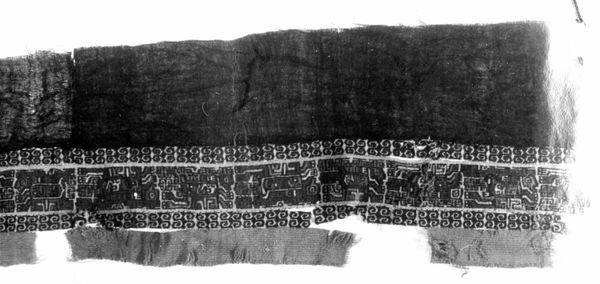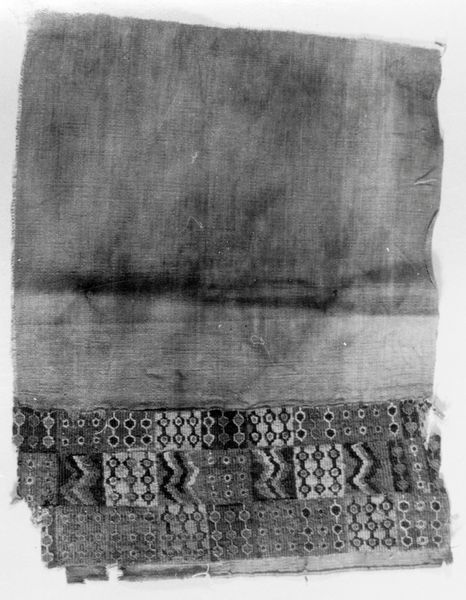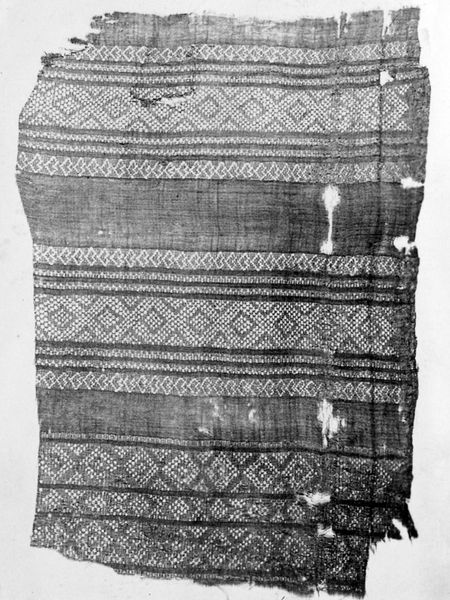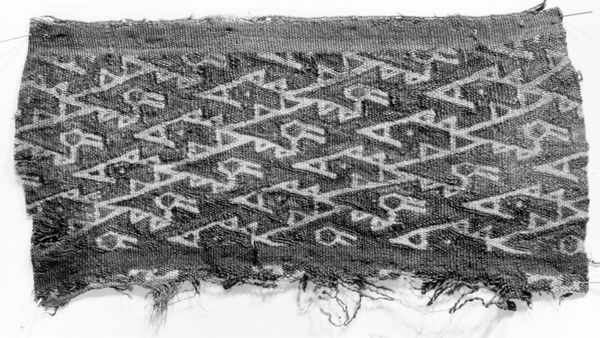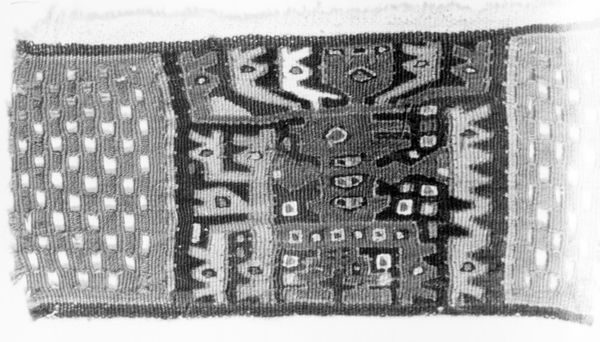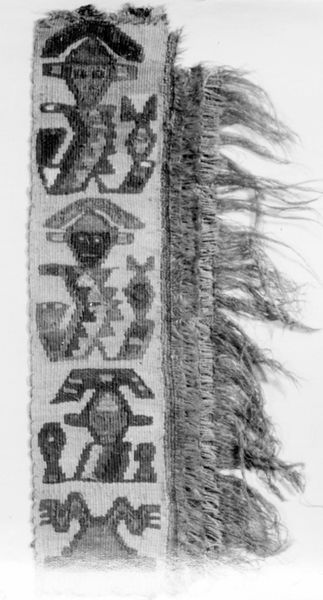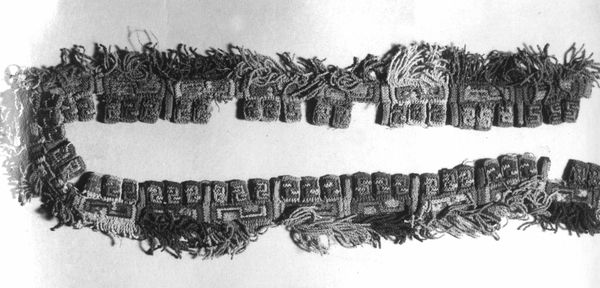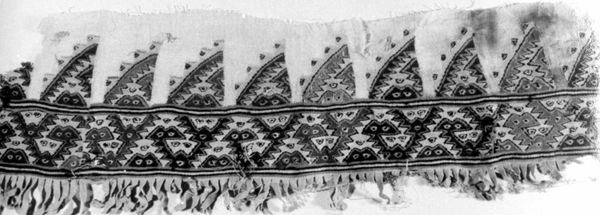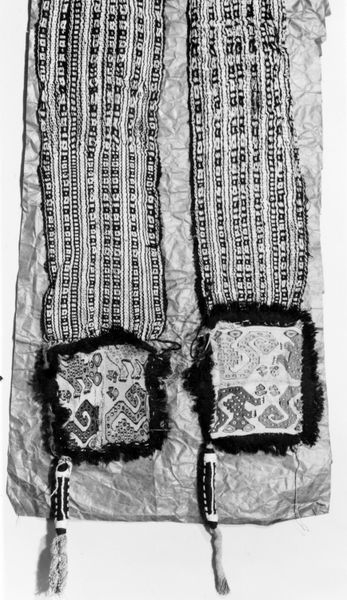
fibre-art, weaving, textile
#
fibre-art
#
weaving
#
textile
#
geometric
#
indigenous-americas
Copyright: Public Domain
Curator: We're looking at a "Tunic" from the Nazca culture, possibly made between 800 and 900. It's currently held at the Art Institute of Chicago. It’s striking isn't it? Editor: It really is! The precision of the weaving is impressive, and I can’t help but notice the fringe. What kind of social and cultural statements can you interpret from this garment? Curator: The tunic is a testament to skilled labor, to begin. Someone invested a massive amount of time and labor. Think about the process of harvesting fibers, dyeing, spinning yarn, and meticulously weaving complex patterns. It probably signals the wealth and social standing of the person who wore it. Do you agree that materiality speaks volumes? Editor: Absolutely, the materials definitely give a sense of wealth and maybe status. And, judging by the pattern and labour that it took to make, perhaps this object would have had value to a wide audience beyond the wearer. It reminds me that indigenous textile production blurs the boundaries between art, craft and industry. Curator: Exactly. And by studying the techniques and raw materials of its production, we learn so much more about a culture. The weaving patterns also likely convey symbolic meaning. The fringe that you spotted, it is not just decorative: does it suggest additional layers of value for the community beyond its original intention? Editor: Now that I see the pattern detail up close, I’m wondering about what other symbols or status signals were part of the original object when it was made. It certainly emphasizes that we might need to re-evaluate these items in a different light! Curator: Right! It's important to think beyond the finished product and consider the means and the relations of production. So much we miss. I am learning about new production strategies simply by having this dialogue.
Comments
No comments
Be the first to comment and join the conversation on the ultimate creative platform.
